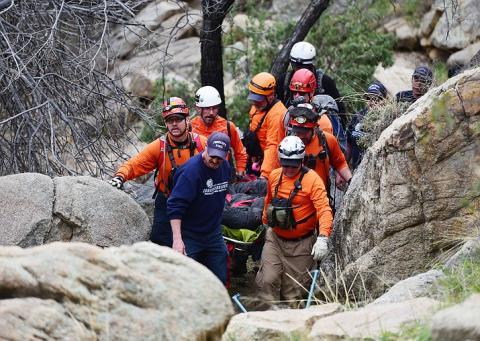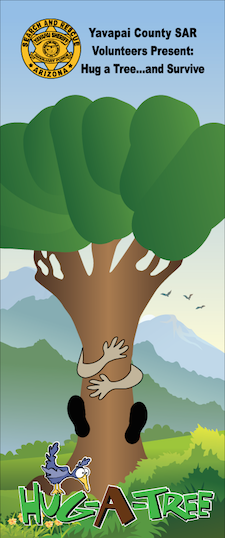How to prepare for the worst, 7 tips to stay out of trouble

With the coming of warmer weather, people are once again heading outdoors.
But every summer, the volunteers of the Yavapai County Search and Rescue Team (YCSRT) are called to find and bring out injured and lost hikers, bikers and other people.
Many hikers get into trouble when they lose track of the time.
“A key element for hikers is to understand how quickly darkness arrives when you begin a late-afternoon excursion,” said Sheriff’s spokesman Dwight D’Evelyn. “In light of this factor, clothing is another important consideration. Although you may leave a trailhead in a warm, comfortable climate, the temperature can drop quickly after sunset.
“If you have access to a smartphone, items such as a flashlight, compass, trail map access, and, of course, GPS location capability is available. But, remember, the cellphone is only as good as the ability of its signal to reach out,” D’Evelyn said.
This is why the YCSO strongly advises the use of personal satellite trackers. These devices need only a clear view of the sky to work, and can summon help where phones have no signal.
Also important, YCSRT member Josh Schmidt said, is light.
“Both a light source for during the day, like a mirror or something reflective,” he said, and a flashlight, which serves a dual purpose.
“I don’t know how many times we do missions because somebody went out during the day, and the sun went down, and now I don’t know where I am … it’s amazing how far you can see a light source at night, either from a helicopter or from a high point we can hike up.”
Schmidt recommends carrying the items needed to start a fire, even if you don’t plan to be out overnight, and extra water as well.
“I would say that (in) a good 75 percent of our missions, if people have that, they may not be able to get themselves out of trouble right then, but when we find them they’re going to be in a lot better shape— and it’s going to be easier for us to find them,” he said.
More risky, Schmidt said, are technical rescues.
“We get a lot of times where people hike up to the top of Granite Mountain and they’ll look out from the top and say, ‘Oh, there’s the parking lot,’ so they try to take what looks to be a shorter route … and they get stuck in a spot where they can’t get down anymore and they can’t get up.”
That kind of rescue requires more manpower, more gear, and often, a helicopter.
Here are some tips to help keep you out of trouble in the backcountry:
• Always give someone you trust a written copy of your trip plan. The more specific, the better.
• Always go with a group. There is safety in numbers.
• Be willing turn back and end your hike. Not making this decision to turn back can jeopardize your life or the lives of others in your group.
• Dress properly.
Be prepared for the worst kind of weather possible for the time of year in the geographical location that you are going to be in or travel through.
Do not wear cotton clothing. Wear wool, fabric blends or synthetics that are resistant to moisture and that dry quickly.
• Pay attention to what your body is telling you.
For example, if you are experiencing nausea, headache, dizziness, fatigue or shortness of breath, then you may be succumbing to an environmental medical condition.
• Be prepared for the worst. Always take a survival kit.
• Watch out for your dog. Your dog is only as fit as you are.
And if you should become lost — stop moving. You can be found much more quickly if you stay put than if you keep trying to find your way out.






































